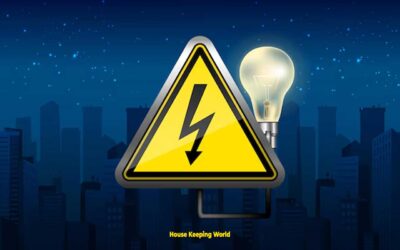Nobody can say for sure when a power outage will occur or how long it will take for the lights to return. Even though you have no control over these circumstances, power outage preparedness can help keep your family and property safe until your local utility company restores electricity.
Here are some key steps to minimize harm, manage the outage, and ensure you’re ready if you suspect an outage is imminent.
How to Prepare for an Outage
While some outages happen unexpectedly, storms often signal a potential blackout. Follow these best preparation tips to stay ahead of a power failure.
1. Charge Your Devices
Before the lights begin to flicker, take action by charging your phone and laptop. It’s also wise to have portable power banks charged and ready. Additionally, keep a battery-operated radio on hand to stay informed about news and weather updates without draining your phone battery.

2. Stock Up on Batteries and Flashlights
While your phone has a built-in flashlight, using it constantly will drain its battery. Instead, ensure you have working flashlights and extra batteries. Avoid relying on candles, as flashlights and battery-operated lights are safer and more practical.

3. Invest in a Generator
If you live in a storm-prone area, investing in an automatic or standby generator is a smart decision. This is especially important for those who rely on medical equipment that requires electricity. Look for government or utility company incentives to help offset the cost.

4. Have a Backup Shelter Plan
If a power outage lasts more than a day, especially when working from home or dealing with extreme weather, have an alternative place to stay. Identify friends, family, or community centers where you can charge your phone or spend the night if necessary.

How to Respond to a Power Outage
During an outage, staying calm will help you make smart decisions. Follow these steps to keep your home and family safe.
1. Contact Your Utility Company
Don’t assume your neighbors have already reported the outage. Contact your utility company immediately to ensure they are aware of the situation and get an estimated restoration time.

2. Keep Your Refrigerator Closed
Minimize opening your refrigerator and freezer to preserve cold air for as long as possible. Store non-perishable foods that don’t require refrigeration, especially if you live in an area prone to long outages.

3. Unplug Electronic Devices
When power is restored, sudden voltage spikes can damage appliances and even cause fires. Unplug large electronics and devices that aren’t connected to a surge protector to prevent damage.

Final Thoughts
Power outages can be unpredictable, but with the right power outage preparedness plan, you can minimize disruptions and keep your family safe. By following these simple steps—charging devices, storing essentials, and having a backup plan—you’ll be ready for any unexpected blackout. Stay prepared, stay safe!
Image From Freepik
